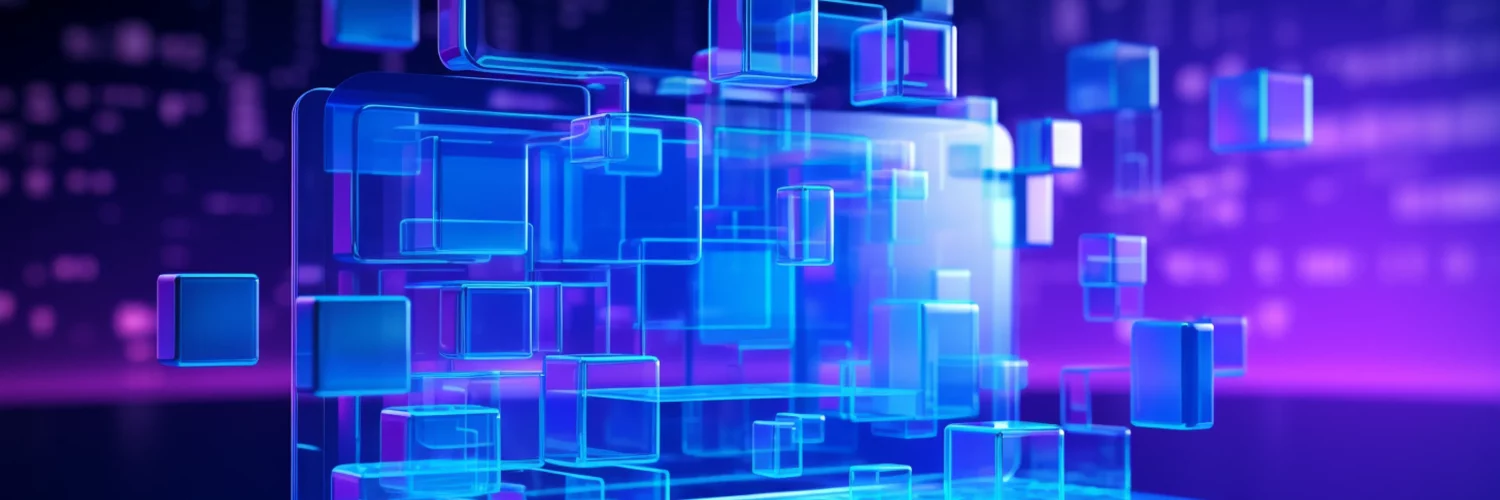Back in 1996, the first iteration of CSS was released and since then the CSS has played an integral role in shaping the aesthetics and layout of the World Wide Web. CSS is the reason why most of the website now have a good looking interface and over the years CSS has evolved significantly to keep pace with the dynamic demands of modern web design.
We’ve seen new CSS libraries that aim to make life easier for developers, but CSS remains the foundation.
In this detailed blog, we will delve through the evolving landscape of CSS and CSS3, exploring how it has transformed and diverged into CSS3, a more advanced and feature-rich version.
Without further ado, Let’s get started!
What is CSS
CSS or Cascading Style Sheet which is used to style the webpage or more precisely, it is used to style the HTML structure of the web.
CSS allows for the separation of content (usually structured with HTML) and presentation (defined by CSS). This separation makes it easier to maintain and update websites, as changes to the design can be made in the CSS file without altering the underlying content.
CSS, or the first iteration of CSS, has all the basic features like defining colors, fonts, margins, padding, text alignment, and basic layout control. It enables you to create visually appealing web content and structure the presentation of HTML elements.
However, CSS does not have features like advanced animations, gradients, rounded corners, and complex layout systems that are found in CSS3.
Often, people refer to CSS3 as CSS, since now there is no longer a version number; it is simply called CSS regardless of its version.
What is CSS3
Fast forward to the present, and we have CSS3. CSS3 is not merely an incremental update; it’s a significant evolution from CSS1. CSS3 introduces a several of new features and capabilities, allowing designers and developers to push the boundaries of web design.
CSS3 has made substantial improvements in terms of browser compatibility. Modern web browsers have better support for CSS3, reducing the need for browser specific hacks and ensuring a more consistent user experience. While some older browsers may not fully support all CSS3 features, progressive enhancement and graceful degradation techniques can help maintain usability o.
Key Features of CSS3
CSS3 came with various CSS properties that the reduce the work of developers like us to create attractive webpage. Once these features was hard to implement but right now the features are just one line of code and you have your results. Some of the key features of CSS3 are:
Rounded Corners
CSS3 allows you to create elements with rounded corners without the need for images or complex HTML structures. You can use properties like border-radius to achieve this effect.
.my–box {
border–radius: 10px;
}
Box Shadows
The box-shadow property in CSS3 allows designers to add shadows to elements, enhancing the depth and realism of web content. You have control over the shadow’s position, size, and blur radius.
.my–box {
box–shadow: 5px 5px 5px #888888;
}
Text Shadows
Similarly, CSS3 introduces the text-shadow property, enabling the addition of shadows to text. This improves readability and adds visual appeal to typography.
.my–text {
text–shadow: 2px 2px 2px #333;
}
Animations and Transitions
CSS3 introduces animation and transition properties, such as animation and transition, allowing you to create dynamic and interactive elements without solely relying on JavaScript.
.my–element {
animation: myAnimation 2s infinite;
}
@keyframes myAnimation {
0% { transform: scale(1); }
50% { transform: scale(1.2); }
100% { transform: scale(1); }
}
Grid Layout
The CSS3 Grid Layout is a robust system for creating two-dimensional layouts. It’s especially useful for designing responsive web pages with complex grid structures, enabling precise control over the placement of elements.
.container {
display: grid;
grid–template–columns: 1fr 2fr 1fr;
grid–gap: 10px;
}
Custom Fonts
CSS3 allows the use of custom fonts through the @font-face rule. This means you’re not limited to web-safe fonts, and you can use custom typefaces in your designs.
Gradients
CSS3 provides the ability to create gradients, allowing for smooth transitions between colors. The linear-gradient and radial-gradient properties make it easy to add depth and dimension to your designs. Gradients can be applied to backgrounds and text.
.my–element {
background: linear–gradient(to right, #ffcc00, #ff9900);
}
There are many another CSS features that was introduced including several CSS selectors. CSS3 introduced various new selectors for targeting specific elements or states.
New selectors in CSS3
One of the best feature that CSS3 introduced was the various types of css selectors. It gives you the freedom to target elements much more easier. Come of the new selectors in CSS3 are:
:nth-child(): The :nth-child() selector allows you to target elements based on their position in relation to their parent element
tr:nth–child(even) {
background–color: #f2f2f2;
}
:not(): The :not() selector allows you to select elements that do not match a specific condition. It’s handy for selecting elements that don’t meet certain criteria.
p:not(.special) {
color: #333;
}
:first-child and :last-child: These selectors target the first and last child elements of a parent. They are useful for applying styles to elements at the beginning or end of a container
li:first–child {
font–weight: bold;
}
li:last–child {
font–style: italic;
}
:checked: The :checked selector is typically used with form elements, such as checkboxes and radio buttons. It allows you to style elements that are selected or checked.
input[type=“checkbox”]:checked {
border: 2px solid green;
}
::before and ::after: These pseudo-elements are used to insert content before and after an element’s content, allowing you to add decorative elements without modifying the HTML. They are commonly used for creating custom icons or labels.
.info::before {
content: “ℹ”;
}
.warning::after {
content: “⚠”;
}
CSS vs. CSS3 Comparison
Let’s now compare CSS and CSS3 based on various criterias
Media Queries
CSS: CSS doesn’t support media queries. This lack of support means that CSS alone is not well-suited for creating responsive web designs that adapt to different screen sizes and devices.
CSS3: One of the standout features of CSS3 is its support for media queries. This feature enables web designers to create responsive layouts that adjust to various device characteristics, ensuring a seamless experience for users on mobile devices and different screen sizes.
Browser Support
CSS: CSS, being an earlier technology, may not be fully supported by modern browsers. However, it still works on older versions of browsers like Internet Explorer(deprecated now) or Chrome, ensuring backward compatibility.
CSS3: CSS3, being a more modern technology, is supported fully by all modern browsers. This comprehensive browser support means that web developers can leverage its features without worrying about compatibility issues.
Compatibility Between Versions
CSS: CSS is not compatible with CSS3. The two technologies have different syntax and capabilities, making it challenging to mix and match them effectively.
CSS3: CSS3, on the other hand, is designed to be backward compatible with CSS. This means that you can incorporate CSS3 features into your CSS code without breaking your existing styles. This compatibility ensures a smoother transition to newer technology.
Block Support
CSS: CSS primarily supports single blocks. It is less capable when it comes to handling multi-column text blocks.
CSS3: CSS3 introduces support for multi-column text blocks, providing a more advanced layout capability for web designers.
Module Use
CSS: CSS does not have built-in module support. Stylesheets are typically created as a single, monolithic block.
CSS3: CSS3 introduces the ability to group CSS code into convenient modules. This modularity enhances code organization and maintainability, making it easier to manage large and complex stylesheets.
Color Format
CSS: CSS uses older standard color formats.
CSS3: CSS3 offers a more extensive range of color formats, including gradient colors and schemes like RGBA, HSLA, HSL, and more. This expanded color palette allows for more creative and visually appealing designs.
Performance
CSS: CSS provides average performance and may require high memory usage, particularly when dealing with complex layouts or animations.
CSS3: CSS3 offers fast and excellent performance, thanks to its optimized rendering of advanced styles and animations. It is engineered for efficiency and typically doesn’t consume as much memory, ensuring smoother user experiences. CSS3 also allows you to have hardware-accelerated animations, which are really useful for animations and transformations.
Why CSS3 Matters
As we said earlier, CSS3 is not just an incremental upgrade; it’s a fundamental improvement in web design. Here are some reasons why CSS3 matters:
Enhanced User Experience: CSS3 allows developers to create visually stunning and interactive websites, enhancing the user experience.
Faster Load Times: With CSS3, you can achieve effects like gradients and shadows without relying on images, reducing load times.
Mobile Optimization: CSS3’s responsive design features make it easier to create websites that adapt to various devices, ensuring a seamless experience for mobile users.
Better Maintenance: The modular nature of CSS3 makes it easier to maintain and update styles, improving code maintainability.
Cross-Browser Compatibility: CSS3 reduces the need for browser-specific hacks, resulting in a more consistent and efficient development process.
Wrapping it Up
Thanks for checking out this blog. In this detailed post, we discussed the difference between CSS and CSS3 and how the third iteration of CSS, commonly known as CSS3, represents a significant leap in web design and development.
We have discussed various aspects of CSS and CSS3, highlighting their differences and the evolution of web design. We have also discussed the new features in CSS3 that make the development process much easier than before.
Keep learning!






Add comment